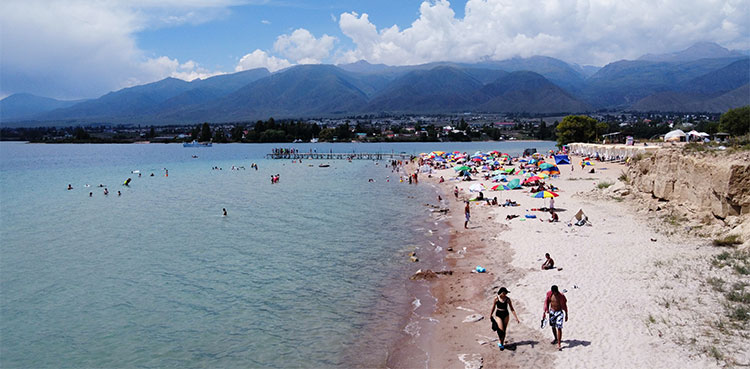Kyrgyzstan is a country located in Central Asia, landlocked and mountainous, with a rich cultural heritage and history. Here are some key facts about Kyrgyzstan:
1. Capital: Bishkek
2. Population: Approximately 6.5 million people
3. Language: Kyrgyz (official), Russian, and Uzbek
4. Religion: Islam (majority), Christianity, and traditional beliefs
5. Currency: Kyrgyzstani som
6. Economy: Agriculture, mining, and tourism
7. History: Part of the Silk Road, previously ruled by various empires, including the Soviets
8. Culture: Nomadic traditions, music, dance, and handicrafts
9. Landmarks: Lake Issyk-Kul, Tian Shan mountains, and the ancient city of Balasagun
10. Cuisine: Meat-based dishes, bread, and traditional beverages like kumis (fermented horse milk)
Kyrgyzstan is known for its stunning natural beauty, diverse culture, and friendly people. It’s a popular destination for trekking, horseback riding, and cultural tourism.
Foreign students in Kyrgyzstan typically study medicine, as many of the universities in Kyrgyzstan offer medical programs.
History of Ethnic Tensions
The history of ethnic tensions in Kyrgyzstan can be traced back to the Soviet era, when the country was divided into separate republics, and borders were drawn without regard to ethnic or tribal affiliations. The Ferghana Valley, which is shared by Kyrgyzstan, Uzbekistan, and Tajikistan, has been a flashpoint for ethnic tensions due to its diverse population and competing territorial claims.
In 1990, ethnic clashes between Kyrgyz and Uzbeks in the city of Osh resulted in hundreds of deaths and injuries, and the situation has remained volatile since then. The tensions escalated in 2010, following the overthrow of President Kurmanbek Bakiyev, leading to widespread violence and clashes between Kyrgyz and Uzbek communities in the southern regions. The violence resulted in over 400 deaths, thousands of injuries, and the displacement of hundreds of thousands of people, mainly Uzbeks.
The ethnic tensions in Kyrgyzstan are fueled by various factors, including competing economic and political interests, cultural and linguistic differences, and historical grievances.
The Kyrgyz and Uzbek communities have different cultural and religious traditions, with the Kyrgyz being predominantly nomadic and the Uzbeks being more urbanized. The Kyrgyz have historically been the dominant ethnic group, holding political and economic power, while the Uzbeks have been a significant minority.
The government of Kyrgyzstan has taken steps to address the ethnic tensions, including the establishment of a national commission to investigate the 2010 violence and the implementation of policies aimed at promoting inter-ethnic dialogue and reconciliation.
However, much work remains to be done to address the underlying causes of the tensions and to ensure lasting peace and stability in the country.


Leave a Comment